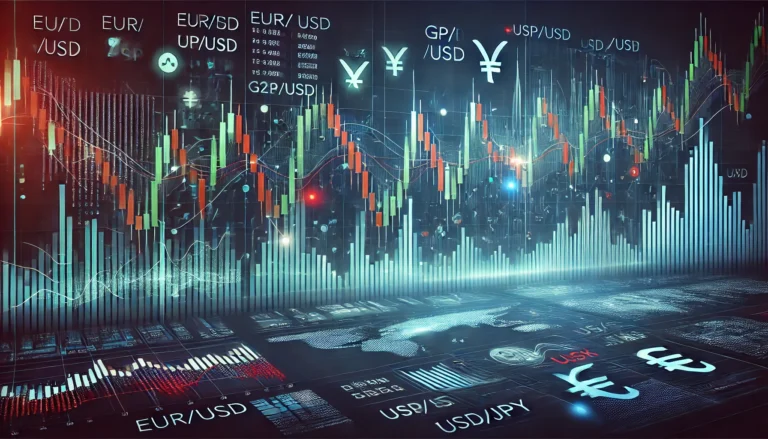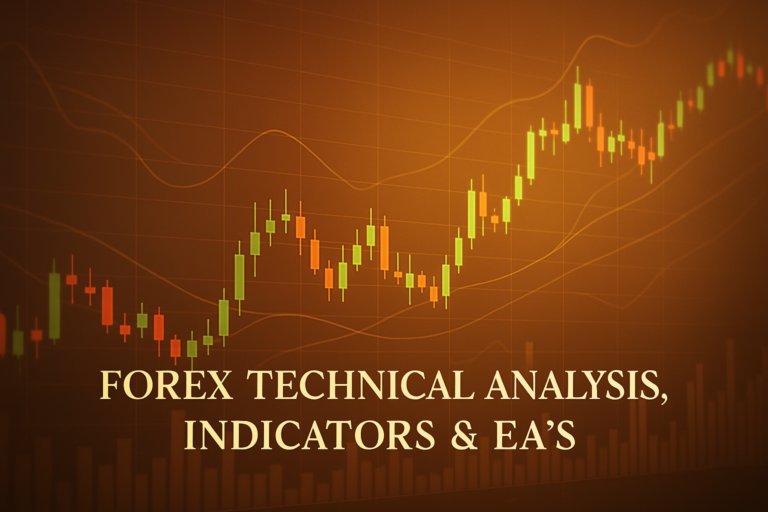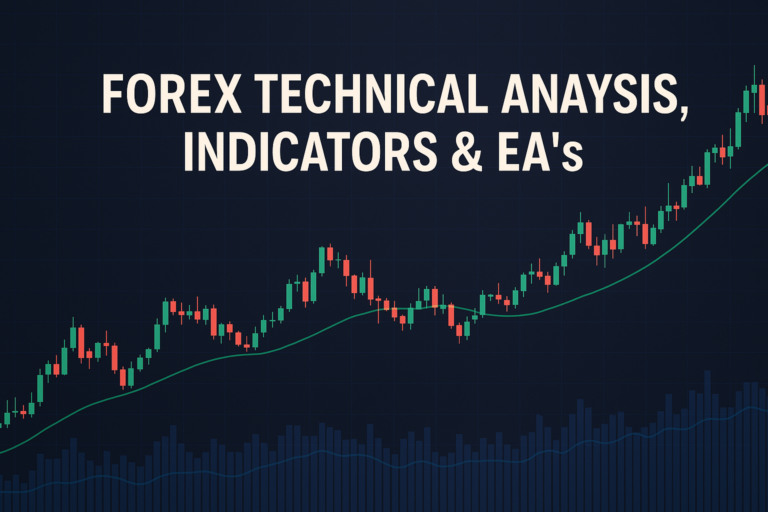
Forex market analysis is essential for successful trading, guiding you through market trends and strategies to enhance your trading decisions.
The forex market analysis is like the compass for traders navigating the vast ocean of currency exchange. It provides essential insights into market trends, price movements, and economic indicators that influence currency values. For beginners and seasoned professionals alike, understanding this analysis is crucial for making informed trading decisions.
However, many traders struggle with forex market analysis. They may find the charts overwhelming or feel confused by the numerous factors affecting currency fluctuations. This difficulty can lead to missed opportunities or costly mistakes. That’s why it’s vital to grasp the principles of market analysis and apply them effectively to enhance trading performance.
For those looking to dive deeper into their trading journey, understanding forex trading account insights can provide valuable knowledge to guide their decisions.
Understanding the Forex Market Analysis
Forex market analysis refers to examining various factors that influence currency prices, including technical indicators, economic data, and market sentiment. This analysis helps traders predict future price movements and make informed trading choices. Many factors can lead to unexpected changes in currency values, such as geopolitical events, central bank decisions, or economic reports.
For instance, imagine a trader analyzing the USD/EUR currency pair. If the U.S. Federal Reserve announces an interest rate hike, the U.S. dollar might strengthen against the euro, leading the trader to buy USD. Conversely, if political unrest arises in Europe, the euro could weaken, prompting the trader to sell. These real-life scenarios show how market analysis can directly impact trading decisions.
Pro’s and Con’s for Forex Market Analysis
While forex market analysis offers numerous benefits, it also has its downsides. Here’s a breakdown to help you understand better:
- Pros:
- Enhanced decision-making: Analyzing market trends allows traders to make educated choices.
- Risk management: Understanding potential risks helps traders avoid significant losses.
- Strategic advantage: Traders who analyze the market can capitalize on opportunities that others may miss.
- Cons:
- Complexity: The vast amount of data and indicators can be overwhelming for beginners.
- Time-consuming: Analyzing the market requires consistent effort and dedication.
- Possibility of errors: Misreading data can lead to poor trading decisions.
To mitigate these issues, traders should follow a step-by-step approach:
- Educate Yourself: Invest time in learning about market analysis techniques and tools.
- Practice Regularly: Use demo accounts to practice without financial risk.
- Set Clear Goals: Determine what you want to achieve with your trading strategy.
- Stay Updated: Keep an eye on economic news and events that could affect the market.
Additionally, for those interested in exploring trading without financial risk, you can learn about forex trading without risking real money to practice your skills in a safe environment.
Frequently Asked Questions
1. What is the best time to analyze the forex market?
The best time to analyze the forex market is during peak trading hours, especially when major financial centers are active. Typically, the overlap between London and New York sessions offers the most volatility and trading opportunities. For example, if you’re trading the EUR/USD pair, analyzing during this time could give you better insights into price movements.
2. How often should I conduct forex market analysis?
Traders should analyze the forex market regularly, depending on their trading strategy. Day traders might analyze the market multiple times a day, while swing traders may do so daily or weekly. For instance, a day trader may focus on short-term trends and news releases that could impact prices, while a swing trader looks for longer-term trends.
3. What tools can help with forex market analysis?
Several tools can assist in forex market analysis, including charting software, economic calendars, and news feeds. For example, platforms like MetaTrader provide sophisticated charting tools that can help traders identify patterns and trends. An economic calendar can keep you informed about upcoming events that might influence currency movements.
4. Is technical analysis better than fundamental analysis?
Both technical and fundamental analyses have their merits and can complement each other. Technical analysis focuses on price movements and patterns, while fundamental analysis considers economic indicators and news. For instance, a trader may use technical analysis to identify entry and exit points, while relying on fundamental analysis to understand the overall economic environment.
5. How can I improve my forex market analysis skills?
Improving your forex market analysis skills requires practice and continuous learning. Start by studying different analysis techniques, using demo accounts to test your skills, and joining trading communities for insights. For example, participating in webinars or forums can expose you to various trading strategies and perspectives.
6. What common mistakes do traders make in market analysis?
Common mistakes include relying too heavily on one type of analysis, ignoring news events, and failing to adapt to changing market conditions. For example, a trader who solely relies on technical analysis might miss significant price movements triggered by economic news, leading to losses. It’s crucial to stay flexible and incorporate various analysis methods.
7. Can I automate my forex market analysis?
Yes, many traders use automated trading systems or algorithms to perform market analysis. These systems can analyze data faster and often execute trades based on predetermined criteria. However, it’s essential to regularly monitor and adjust these systems to ensure they respond to changing market conditions effectively.
Conclusion
In summary, mastering forex market analysis can significantly enhance your trading skills. It’s a journey that requires patience, practice, and continuous learning. Remember, understanding the market dynamics is key to making informed trading decisions. With time, you can manage and even avoid common pitfalls, leading to more successful trades.
Stay curious and keep learning! The more you understand forex market analysis, the better equipped you will be to navigate the exciting world of trading.
Recommended Next Steps
To further your understanding of forex market analysis, consider the following steps:
- Read books or take online courses on forex trading.
- Join trading communities to share experiences and learn from others.
- Practice using a demo account before trading with real money.
- Follow economic news and reports to stay updated on market conditions.
- Experiment with different analysis techniques to find what works for you.
Mastering forex requires learning from the best—start with this BabyPips, Benzinga
Expand Your Knowledge
- 📌 Forex Trading Learning Road Map
- 📌 Forex Trading Course with no Fees
- 📌 Forex Trading Issues, Problems, and Solutions
- 📌 Forex Daily Forecast & Live Updates
- 📌 Forex Fundamental & News Analysis: Tomorrow’s Market Movers & Trade Opportunities
- 📌 Forex Education Hub: Learn & Profit
- 📌 Forex Technical Analysis, Indicators & EA’s
Start Trading Today
Ready to take your forex trading to the next level? Open an account with Exness, one of the most trusted platforms in the industry. 👉 Sign Up Now and start trading with confidence!
Exness stands out with ultra-low spreads for mini traders, instant withdrawals, and zero spread accounts for pro traders. Trusted since 2008, Exness offers lightning-fast execution, no hidden fees, and a secure, transparent trading environment—giving you the edge you need to succeed. 🚀 Join now and trade smarter!
Watch this helpful video to better understand forex market analysis:
Note: The video above is embedded from YouTube and is the property of its original creator. We do not own or take responsibility for the content or opinions expressed in the video.
In the video, the presenter shares their five-year journey of learning to analyze financial charts, emphasizing the importance of understanding market trends to make profitable trades. A chart is described as a fundamental tool that reflects real-time price movements of various assets, including currencies, stocks, and cryptocurrencies. The primary goal of analyzing charts is to determine the market’s direction, allowing traders to anticipate whether prices will rise (bullish) or fall (bearish). The presenter highlights two main approaches for predicting market direction: fundamental analysis, which relies on economic data and news, and technical analysis, which focuses on chart patterns and price movements. The key takeaway here is that successful trading involves recognizing market trends, which can be identified through higher highs and higher lows for bullish markets, or lower lows and lower highs for bearish markets.
The speaker also discusses critical concepts such as support and resistance levels, which are essential for making trading decisions. Support acts as a “floor” where prices tend to bounce back up, while resistance serves as a “roof” where prices often reverse downward. Traders are encouraged to buy near support and sell near resistance. Additionally, the presenter covers candlestick patterns, which provide insights into potential market reversals. For example, a head and shoulders pattern forming at a resistance level suggests a downward move, while an inverted head and shoulders at a support level indicates a potential upward bounce. By understanding these elements—market direction, support and resistance levels, and candlestick patterns—traders can make informed decisions and enhance their chances of success in the forex market. For those interested in further strategies, the presenter offers a “set and forget” trading approach that has helped many students achieve significant weekly earnings.
If you’re encountering issues with automated trading systems, you might want to explore the topic of Trade Copier Failure. It’s important to understand the challenges that can arise when relying on trade copiers, and how to overcome them to enhance your trading experience and results.





